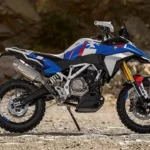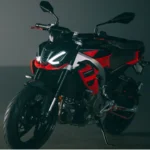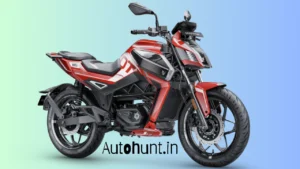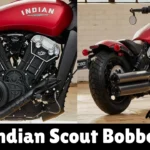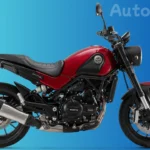If you’ve ever wondered what is a fat bike and why so many adventure seekers and casual riders alike are switching to them, this guide will answer all your questions. A fat bike is a bicycle designed with super-wide tires that let you conquer terrains where regular bikes struggle — think snow, sand, mud, and rough trails. Whether you want to explore snowy mountains, sandy beaches, or rugged off-road paths, fat bikes open new possibilities.

In this complete beginner’s guide, you’ll learn about the key fat bike features, how they compare to mountain bikes, their benefits, top models for 2025, and practical tips for buying and riding one. Let’s dive right in!
What Is a Fat Bike? The Basics Explained
At its core, a fat bike is a bicycle fitted with wide tires—usually 3.8 inches or wider. These tires provide enhanced grip and stability on soft or unstable surfaces. Unlike conventional bikes with narrow tires, fat bikes’ wide tires spread your weight over a larger area, preventing you from sinking into loose terrain like snow or sand.
Fat tire bikes first gained popularity among winter cyclists and adventure enthusiasts but have since become popular worldwide, including India and other countries with diverse landscapes.
Key Fat Bike Features You Should Know
Fat bikes come packed with features that make them unique and ideal for all-terrain riding. Here’s what you should look for:
-
Wide Tires: The hallmark of a fat bike is its tires, typically ranging between 3.8 to 5 inches in width. These provide the necessary flotation over soft surfaces.
-
Low Tire Pressure: Fat bikes allow tires to run at very low pressures (5-15 PSI), enabling the tires to mold around obstacles and grip slippery terrain.
-
Strong Frames: The frames are usually built with durable aluminum or steel to handle tough conditions and extra tire width.
-
Suspension Options: Some fat bikes feature front suspension forks or even full suspension for smoother rides on rocky trails.
-
Multiple Gears: Fat bikes generally come with a wide gear range to handle climbs, flat terrain, and descents comfortably.
-
Electric Assistance: Electric fat bikes are increasingly popular, adding power for longer rides or hilly areas.
Fat Bike Benefits: Why Choose Wide Tire Bikes?
Fat bikes offer many advantages that regular mountain or road bikes can’t match:
-
All-Terrain Capability: Fat bikes excel on snow, sand, mud, gravel, and rocky trails — terrains where regular bikes falter.
-
Improved Stability: Wider tires offer better balance, making them ideal for beginners or riders tackling tricky surfaces.
-
Comfort: Low tire pressure combined with large tires absorbs shocks, reducing fatigue on rough trails.
-
Versatility: These bikes handle urban potholes as well as backcountry trails, making them true all-terrain bikes.
-
Adventure Ready: Fat bikes encourage exploring new places, from beaches and deserts to snow-covered mountains.
Fat Bike Vs Mountain Bike: What’s the Difference?
Although both are designed for off-road riding, fat bikes and mountain bikes serve different purposes:
| Feature | Fat Bike | Mountain Bike |
|---|---|---|
| Tire Width | 3.8 to 5 inches or more | Usually 2 to 2.5 inches |
| Terrain | Soft/snowy/sandy/loose | Hard-packed trails, rocky |
| Weight | Generally heavier | Lighter |
| Speed | Lower top speed | Higher top speed |
| Suspension | Sometimes minimal or front suspension | Often front or full suspension |
| Price Range | Varies, sometimes higher due to specialty tires. | Wide range |
Choose a fat bike if you ride over soft, unstable surfaces like snow or sand. Pick a mountain bike for technical rocky trails and faster rides.
Best Fat Bikes 2025: Top Models You Can Consider
Here are some of the best fat tire bikes for 2025 that cater to different budgets and needs:
-
Salsa Mukluk: Known for durability and performance on snow and sand.
-
Trek Farley: Lightweight and versatile, perfect for adventure riders.
-
Rad Power Bikes RadRover 6 Plus: A popular electric fat bike with strong battery life.
-
Specialized Fatboy: Lightweight frame and responsive handling.
-
Local Indian Brands: Emerging manufacturers now offer quality fat bikes at budget-friendly prices, perfect for riders looking for affordability.
These bikes cover all kinds of needs — from beginner-friendly models to professional-grade adventure fat bikes.
Fat Bikes for Snow and Sand: Specialized Use Cases
Fat bikes shine in specific terrains:
-
Fat Bikes for Snow: Snowy conditions, like winter mountain trails, are no match for fat bikes. Their wide tires distribute your weight and improve traction on ice and snow.
-
Fat Bikes for Sand: Whether riding on a beach or desert, these bikes float on soft sand without sinking, making them perfect for beach cruising and desert adventures.
India’s diverse geography makes fat bikes a great option for Himalayan snow rides and beachside explorations along the coast.
Fat Bike Price and Buying Guide: What to Know Before You Buy
Fat bikes come in a range of prices depending on quality, features, and brand. Here’s a quick overview:
-
Budget Fat Bikes: Starting around ₹60,000 to ₹1,00,000. Suitable for beginners and casual riders.
-
Mid-Range Bikes: ₹1,00,000 to ₹1,80,000 with better components and frame materials.
-
Premium Fat Bikes: Above ₹1,80,000, including electric fat bikes with advanced suspension and lightweight frames.
Buying Tips:
-
Decide your primary terrain and riding style.
-
Choose tire width based on terrain: wider tires for soft sand and snow.
-
Test ride different bikes for comfort and fit.
-
Consider electric fat bikes if you want assistance on hills.
-
Look for local dealers or reliable online stores with good after-sales support.
Fat Bike Mileage and Top Speed: What to Expect
Most fat bikes focus on stability and comfort rather than speed:
-
Mileage: Varies by terrain and rider effort but expect 15-30 km per ride on regular fat tire bicycles.
-
Top Speed: Generally ranges between 20-30 km/h on flat terrain. Electric fat bikes can push speeds to 30-35 km/h with motor assistance.
Remember, low tire pressure and wide tires prioritize grip and float over high speed.
Electric Fat Bikes: The Future of Fat Tire Biking
Electric fat bikes combine the benefits of fat tires with the power of an electric motor, making them perfect for longer rides and challenging terrain.
-
They assist riders on steep climbs and rough trails.
-
Battery range typically varies from 40 to 80 km depending on use.
-
Although more expensive, electric fat bikes offer a great way to extend adventure rides without exhausting yourself.
In 2025, electric fat bikes are growing in popularity worldwide, including in markets like India.
Fat Bike Suspension and Comfort: What You Should Know
While fat bikes rely heavily on wide tires to absorb shocks, suspension plays a role in enhancing comfort:
-
Rigid Fat Bikes: Rely on tire flex for shock absorption, ideal for sand and snow.
-
Front Suspension Forks: Useful for rocky or uneven trails, they reduce arm fatigue.
-
Full Suspension: Rare in fat bikes but available for riders who want maximum comfort on extreme off-road trails.
Choosing suspension depends on your typical riding terrain and comfort needs.
Fat Tire Bikes in India: Availability and Maintenance
Fat bikes have become more accessible in India, thanks to online marketplaces and specialty stores in metro cities.
Maintenance Tips for Indian Riders:
-
Regularly check tire pressure (low PSI but within safe limits).
-
Clean the bike thoroughly after sandy or muddy rides.
-
Lubricate chains and gears frequently to protect against dust and moisture.
-
Schedule periodic professional servicing, especially for electric fat bikes.
Fat Bike for Beginners: Getting Started the Right Way
For those new to fat biking, here are some tips to enjoy your rides:
-
Start on soft, flat surfaces like beaches or parks.
-
Experiment with tire pressure to find the perfect balance between grip and speed.
-
Practice using gears effectively for uphill and downhill rides.
-
Dress appropriately for weather and terrain.
-
Join local riding groups or online communities to learn and share experiences.
Fat bikes offer a forgiving, stable ride, making them ideal for newcomers eager to explore off-road cycling.
Adventure Fat Bike: Your Ticket to Explore Beyond Roads
If you love adventure, a fat bike can take you places conventional bikes can’t reach. Whether it’s tackling Himalayan passes, cruising sandy deserts, or exploring dense forest trails, these bikes are built to handle it all.
With fat bike features designed for grip, balance, and comfort, you can confidently ride trails that were once inaccessible. The combination of lightweight fat bikes and electric models has made adventure cycling even more accessible.
Conclusion
Fat bikes are revolutionizing the way we explore nature on two wheels. Their wide tires, rugged build, and adaptability make them perfect for a variety of terrains and rider skill levels. From beginners to seasoned adventure riders, fat bikes offer unmatched versatility and fun.
As the best fat tire bikes of 2025 become more accessible worldwide, including India, there’s never been a better time to invest in one. Whether you want to conquer snowy mountain paths, sandy beaches, or muddy trails, a fat bike will elevate your cycling experience.
Get ready to ride beyond boundaries and discover new adventures with your fat bike!
Frequently Asked Questions (FAQs)
1. What makes a fat bike different from a mountain bike?
Fat bikes have wider tires and are designed for soft, unstable terrains like sand and snow, while mountain bikes handle rocky, hard-packed trails.
2. Can I ride a fat bike in Indian winters?
Yes, fat bikes perform exceptionally well on snowy and icy roads common in Himalayan winters.
3. Are electric fat bikes worth the price?
Electric fat bikes offer pedal assistance, making long or uphill rides easier, which can be worth the investment for serious riders.
4. How do I maintain my fat tire bicycle?
Keep tire pressure in check, clean your bike after off-road rides, lubricate the chain regularly, and schedule professional servicing.
5. What’s the average price of a fat bike in India?
Prices range from ₹60,000 for basic models to over ₹2,00,000 for premium and electric versions.
6. Is a fat bike good for beginners?
Yes, fat bikes provide excellent stability and control, making them beginner-friendly.
7. Where can I buy fat tire bikes in India?
You can find them online on platforms like Amazon India, at local dealers, and specialty cycling shops in major cities.
8. How fast can a fat bike go?
Fat bikes typically reach top speeds of 20-30 km/h; electric models can go up to 35 km/h with motor support.
Aditya Misra is a car and bike lover who enjoys everything about automobiles. He has a lot of experience with both new and old vehicles and loves sharing his knowledge and excitement. From trying out the latest models to fixing up classic bikes, Aditya’s writing is full of helpful tips and fun stories for anyone who loves cars and bikes.


